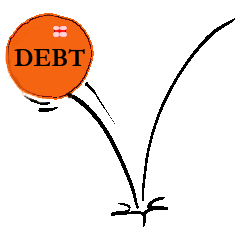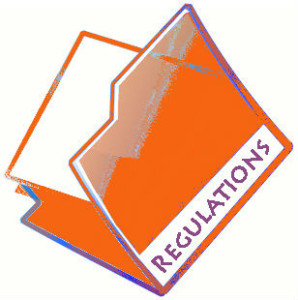by | BLOG, BUSINESS, ECONOMY, ELECTIONS, FREEDOM, GOVERNMENT, OBAMA, POLITICS, TAXES
You can count on Bernie Sanders to be consistent. He loves pointing to Sweden as the hallmark of Socialist success. But a recent compelling article in Reason magazine does an excellent job laying out the history of Sweden’s economic failures and successes, and shows how Sweden’s current approach to business and has rendered their economy more free and flourishing than the United States.
Some key points:
- Real wages in Sweden fell by around 5 percent between 1975 and 1995. Nominal wages increased, but runaway inflation devoured it.
- But in the early 1990s Sweden began to abandon its brief detour into Bernienomics. It deregulated, privatized, reduced taxes, and opened the public sector to private providers. The two decades that followed saw real wages increase by almost 70 percent.
- In the summary Fraser Institute rankings, Sweden and Denmark are more economically free than the United States when it comes to legal structure and property rights, sound money, free trade, business regulation, and credit market regulations. We don’t have the multitude of occupational licensing laws that block competition in the United States.
The article is worth reading in its entirety. If Bernie truly believes Sweden is a blueprint for success, he would do well to pay attention to the Sweden of today, and not the Sweden of 40-50 years ago, when he was coming-of-age in his Socialist beliefs. If Bernie wants America to be like Sweden — America would need a good dose of deregulation and lower taxes, exactly the opposite of what Bernie espouses for America! Perhaps then the American economy would finally begin to recover, because freer markets mean a freer economy and a freer people.
by | ARTICLES, BLOG, BUSINESS, ECONOMY, FREEDOM, GOVERNMENT, OBAMA, POLITICS, TAXES
Marketwatch is reporting dismal numbers related to economic growth in the first three months of 2016; expansion is “the slowest pace in two years as business slashed investment by the steepest amount since the Great Recession.”
GDP growth was significantly reduced as well — recording a .5% annual growth rate. The prior three quarters were 1.4%, 2% and 3.9% in the preceeding year, per quarter.
Marketwatch suggests that some economists contend this sluggishness is an anomaly and will bounce back this spring, estimating a 200,000 job growth for April numbers, which will be released on the first Friday in May. Those with this sentiment predict that “the economy will speed up to a 2.6% annual clip in the spring, typically the fastest growing quarter of the year. The same pattern occurred in both 2015 and 2014.”
On the other hand, I tend to side with economists who are a little bit leery about a robust-growth outlook. “A tepid global economic scene and a tumultuous U.S. presidential election marked by heavy anti-corporate rhetoric appears to have made business executives more cautious.”
Business investment is certainly anemic, and we’ve recently crossed the threshold of more businesses closing than opening. None of this is a sign of a healthy economy, and I doubt very much that the April numbers will be so rosy.
by | ARTICLES, BLOG, ECONOMY, FREEDOM, GOVERNMENT, OBAMA, POLITICS, TAXES
When President Obama took office in 2009, the United States ranked as the 6th best country in the world in terms of economic freedom. Now, in the last year of his term, the United States doesn’t even rank in the top ten anymore.
This year, the Index placed the United States as the 11th most economically free country. This is a significant loss. As noted by the Index, “Economic freedom is a crucial component of liberty. It empowers people to work, produce, consume, own, trade, and invest according to their personal choices.”
Five countries were ranked as “FREE”, meaning they scored 80-100% Those countries are: Hong Kong, Singapore, New Zealand, Switzerland, and Australia.
Rounding out the top ten are: Canada (6), Chile (7), Ireland (8), Estonia (9), and the United Kingdom (10). With the United States ranking 11th, we have our worst score ever recorded. 8 of the last 9 years have seen losses of economic freedom; with this ranking, we have essentially lost a decade worth of economic prosperity progress.
“For much of human history, most individuals have lacked economic freedom and opportunity, condemning them to poverty and deprivation.
Today, we live in the most prosperous time in human history. Poverty, sicknesses, and ignorance are receding throughout the world, due in large part to the advance of economic freedom.
The Index analyzes 186 countries. Economic freedom is based on 10 quantitative and qualitative factors, grouped into four broad categories, or pillars, of economic freedom:
1) Rule of Law (property rights, freedom from corruption);
2) Limited Government (fiscal freedom, government spending);
3) Regulatory Efficiency (business freedom, labor freedom, monetary freedom); and
4) Open Markets (trade freedom, investment freedom, financial freedom).”
Only time will tell if we will regain our freedom or continue to lose it. Much depends on a new President and changes in Congress in 2016.
by | ARTICLES, BLOG, BUSINESS, ECONOMY, GOVERNMENT, OBAMA, POLITICS, TAXES

As has been earlier reported here, the debt ceiling jumped dramatically the day after the debt ceiling was lifted on November 2nd ($339 billion) and continued to soar all month.
By the end of the month, the debt had doubled, adding another $335 billion. All in all, $674 billion in US debt had accumulated, making the total US debt a staggering $18.827 trillion.
Also noted by Zerohedge, the debt was $10.6 trillion on January 21, 2009, on the day President Obama took office. The total debt is now up just over 77% under Obama’s tenure, to $18.8 trillion.
by | ARTICLES, BLOG, BUSINESS, ECONOMY, GOVERNMENT, OBAMA, POLITICS, TAXES
 In recent years, President Obama has issued his Fall Unified Agenda right around Thanksgiving, as most of the country is preparing for the holiday season. This year was no different. This past Friday, the 2015 regulatory list was released.
In recent years, President Obama has issued his Fall Unified Agenda right around Thanksgiving, as most of the country is preparing for the holiday season. This year was no different. This past Friday, the 2015 regulatory list was released.
According to Forbes, “the Fall 2015 Agenda reports on 3,297 rules and regulations at the ‘active,’ ‘completed’ and ‘long-term’ stages, many of them holdovers from earlier volumes. This is down from 3,415 last year.
Active (these include pre-rule, proposed and final): 2,244 (there were 2,321 last fall)
Completed: 554 (629 last fall)
Long-term: 500 (465 last fall)
TOTAL: 3,297 (3,415 last fall)
The Agenda appeared pretty much like clockwork every spring and fall, usually April and October, between 1983 and 2011. But recent releases seem timed to draw as little attention as possible, appearing often at holiday weekends:
Fall 2012: The Friday before Christmas (that Monday was Christmas Eve)
Fall 2013: The day before Thanksgiving
Fall 2014: The Friday before Thanksgiving
Fall 2015: The Friday before Thanksgiving
And more:
“The Fall 2015 Agenda reports on 218 ‘economically significant’ rules and regulations at the ‘active,’ ‘completed’ and ‘long-term’ stages. This is up from 200 at this point last year.
Active (pre-rule, proposed, final): 149 (131 last fall)
Completed: 36 (31 last fall)
Long-term: 33 (38 last fall)
TOTAL: 218 (200 last Fall)
The Fall Agenda includes environmental and energy regulations, such as rules for pesticides and coal; these new items come on the heels of other environmental rules earlier this year including smog, fracking, and carbon dioxide emissions. The American Action Forum calculated the financial impact of “regulation in 2015 to a whopping $183 billion — about half from final rules and the other from proposed rules.”
To view the Fall Unified Agenda, go here.
People go into business to do things and make things in this great country of ours — not to comply with government diktats. The unprecedented growth of bureaucratic regulations has been one of the key factors of our lackluster, anemic economic recovery.

